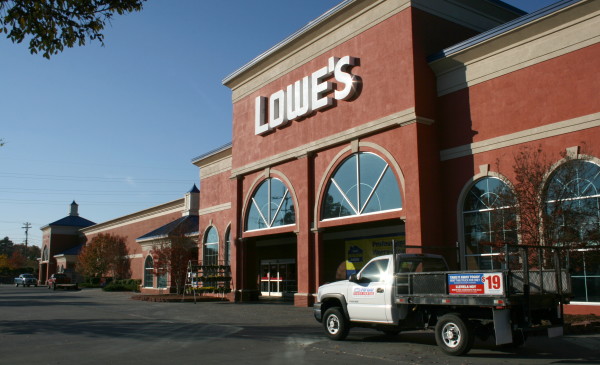American Express Facts
American Express is a diversified global financial services company headquartered in the United States. The company is mainly known to the general public for its credit card, charge card and Traveler’s cheque business. It is also a large player in the travel services, mutual fund, brokerage, financial advisor, and insurance businesses.
Company headquarters are in New York City. The current CEO is Kenneth Chenault, who took over in 2001. The company was led by Harvey Golub from 1993 to 2001 and prior to that it was headed by James D Robinson III from 1977 to 1993.
The company’s common stock trades on the New York Stock Exchange under the ticker symbol AXP. It is one of the 30 stocks that comprise the Dow Jones Industrial Average.
American Express History
American Express was founded in 1850 by Henry Wells, William Fargo, and John Butterfield as an express business. In 1882, American Express launched its money order business to compete with the US Post Office’s money orders. This product quickly spread to Europe where no such financial product existed. Sometime between 1888 and 1890, J. C. Fargo took a trip to Europe and returned frustrated and infuriated.
Despite the fact that he was president of American Express and that he carried with him traditional letters of credit, he found it difficult to obtain cash anywhere except in major cities. Mr. Fargo went to Marcellus Flemming Berry and asked him to create a better solution than the traditional letter of credit. Mr. Berry created the American Express Travelers Cheque which was launched in 1891 in denominations of $10, $20, $50, and $100.
The Travelers Cheque established American Express as a truly international company and in 1915 they announced the establishment of a Travel Department and soon established its first travel agencies.
During the winter of 1917 the US suffered a severe coal shortage and on December 26th President Woodrow Wilson commandeered the railroads on behalf of the US government to move US troops, their supplies, and coal. Treasury Secretary William Gibbs McAdoo was assigned the task of consolidating the railway lines for the war effort.
All contracts between express companies and railroads were nullified and McAdoo proposed that all existing express companies be consolidated into a single company to serve the country’s needs. This ended American Express’s express business. The result was a new company called the American Railway Express company formed in July 1918.
The new entity took custody of all the pooled equipment and property of existing express companies (the largest share of which, 40%, came from American Express who had owned 71,280 miles of railroad lines, 10,000 offices, with over 30,000 employees).
American Express executives discussed the possibility of launching a travel charge card as early as 1946, but it wasn’t until Diners Club launched their own card in March 1950 that American Express began to seriously consider the possibility.
At the end of 1957 American Express CEO Ralph Reed decided to get into the card business, and by the launch date of October 1, 1958 public interest had become so significant that they actually issued 250,000 cards prior to the official launch date.
The card was launched with an annual fee of $6, $1 higher than Diners Club, to be seen as a premium product. The first cards were paper, with the account number and cardmember’s name typed. It wasn’t till 1959 that American Express began issuing embossed ISO 7810 plastic cards, an industry first.
In 1966 American Express introduced the Gold Card and in 1984 the Platinum Card, clearly defining different market segments within its own business, a practice that has proliferated across a broad array of industries.
The Platinum Card was billed as super-exclusive, had a $250 annual fee. It was offered by invitation only to American Express customers with at least 2 years of tenure, significant spending, and excellent payment history.
In 1999 American Express introduced the Centurion Card or “black card” catering to an even more affluent and elite customer segment. It charged a $1,000 annual fee, with a variety of exclusive benefits. Also, in 1999 the company introduced a marketing triumph, Blue from American Express, a popular card among the young and techno-savvy with its multi-functional onboard chip.
There have always been rumors of a super-exclusive card that gives American Express’s richest and most powerful customers special perks. It was this rumor that sparked the launch of Centurion. Still, rumors persist of an even more exclusive card.
During the 1980s, American Express embarked on its dream to become a financial services supercompany. In mid-1981 it purchased Shearson Loeb Rhoades Inc the second largest securities firm in the US. In 1984 it purchased the 90-year old IDS company, bringing with it a fleet of financial advisors and investment products.
Also in 1984, American Express acquired the investment banking and trading firm Lehman Brothers and added it to the Shearson family. When Harvey Golub took the reins in 1993 he negotiated the sale of the Shearson brokerage and in 1994 the spin-off of Lehman Brothers to part with a troubled brokerage and asset management business.
In April 1986 American Express moved its headquarters to the American Express Tower, the center of the World Financial Center in New York City. The 51-story building was an architectural triumph and noted as a significant and important addition to the city.
After the terrorist attacks of September 11, 2001, American Express had to leave its headquarters temporarily as the building was damaged during the attacks – it was located directly across the street from the World Trade Center.
The American Express tower became the backdrop to efforts in rescue, recovery, and reconstruction at Ground Zero. The company began gradually moving back into its rehabilitated building in 2002.
American Express has its European Headquarters in Brighton UK.
In April 1992, American Express spun off its subsidiary, First Data Corp., in an IPO. Then, in October 1996, the company distributed the remaining majority of its holdings in First Data Corp., reducing its ownership to less than 5%.
In December 2000, American Express agreed to acquire the credit card portfolio of Bank of Hawaii, then a division of Pacific Century Financial Corp. Bank of Hawaii, along with its sister bank, Pacific Century Bank, became the first U.S. banks to issue American Express cards when the deal was completed the following year.
In January 2004, American Express reached a deal to have its cards issued by a U.S. bank, MBNA America. These cards were released in October of 2004. This relationship may be in jeopardy with the announcement that MBNA will be purchased by Bank of America.
American Express is suing Bank of America (and other banks) for damages stemming from anticompetitive practices that prevented American Express from issuing cards through U.S. banks. This lawsuit may stop Bank of America from issuing American Express cards.
A second deal made at the end of 2004 will have American Express cards issued by Citigroup by the end of 2005.
Throughout 2005, two further financial companies, UBS AG and USAA, have made deals with American Express to issue its cards. The UBS AG American Express card will be issued by Juniper Bank (a division of Barclays Bank).
On September 30, 2005, American Express spun off its American Express Financial Advisors unit as a publicly traded company, Ameriprise Financial.




